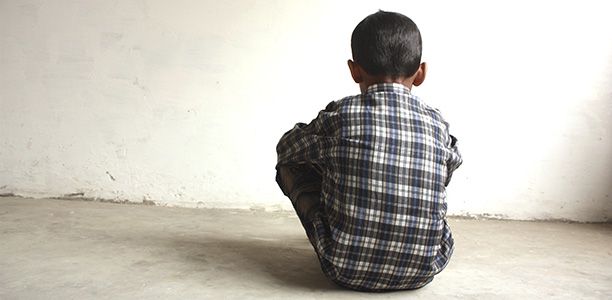Associate Professor Gerry Redmond’s research for the Australian Child Wellbeing Project looked at thousands of young people.
A Flinders University led survey of 5,400 students in 180 primary and secondary schools across Australia has found that young people from marginalised groups face stark inequality in areas including living conditions, physical health, material wellbeing and their family relationships.
The research, as part of the Australian Child Wellbeing Project, was conducted across every state and territory in Australia and also asked young people about their schooling experiences, whether they had experienced bullying and about their subjective wellbeing.
Associate Professor Gerry Redmond, who is based at Flinders, presented these findings at the Australian Social Policy Conference, being held in the John Niland Scientia Building, UNSW’s Kensington campus.
He said it was the first national survey of the wellbeing of young people in their middle years to be carried out in Australia.
Its findings showed that Indigenous young people, young people with a disability, those who are carers, and those who are materially disadvantaged all reported lower life satisfaction, rated their health as worse, were less satisfied at school and had lower levels of family cohesion.
Associate Professor Redmond hopes the research will drive state and federal government agencies to address the plight of Australia’s marginalised young people – which he said now comprised around a quarter of all Australian children.
“Our aim is to provide policymakers with evidence of the systematic nature of disadvantage that young people in these marginalised groups experience,” says Associate Professor Redmond.
“Teachers and other front-line workers who deal with young people on a daily basis will not be surprised by any of these findings, but we believe it will provide the important information necessary for policymakers to work towards greater equality between all Australian young people.”
Associate Professor Redmond’s team, which was funded by the Australian Research Council and a consortium of Australian Government agencies, collated information from a questionnaire sent to schools across every state and territory in Australia.
“These groups comprise a much larger proportion of all young people than most of us would expect, and this should give policymakers an extra impetus to reduce the disadvantage that they experience, and to improve their lives, not only in the present but also as they approach adulthood,” Associate Professor Redmond says.
In addition to the survey, researchers also conducted in-depth, face-to-face interviews with almost 100 marginalised young people.
“The stories they shared with us corroborated the survey findings, and they it was clear that these young people are under quite extreme stress because of the challenges they face,” Associate Prof Redmond sys.
“One young person who was materially disadvantaged told the researchers about how she worried about her parents getting sick, being involved in accidents, not having work, and even about not having enough money to buy clothes.
“One young person with disability told me he would rather just stay at home because he felt so unhappy about how other children acted towards him.”
You can watch ABC’s news report on Associate Professor Redmond’s research here.
Key points
Three in ten young people in school years 4, 6 and 8 identify as being in one or more of the following groups:
Breakdown of marginalised groups:
- Young people with disability (self-identified in the survey) – 11% of the sample
- Young carers who care for a family member with a disability, mental illness or chronic illness (self-identified in the survey) – 9% of the sample
- Young people who are materially disadvantaged (identified through having fewer material possessions than other young people – 10% of the sample
- Indigenous young people (self-identified in the survey) – 5% of the sample
Young people in these four groups are highly disadvantaged when compared with non-marginalised young people. Findings for young people in Year 8 show that:
- In terms of their life satisfaction (their subjective wellbeing): young people who are not marginalised score an average 85/100, but young people in the marginalised groups score between 64 and 70.
- In terms of subjective health (experience of headaches, stomach aches, feeling nervous, feeling dizzy, etc.; and how they feel about their health overall): average non-marginalised score =90/100; average score among the four marginalised groups ranges from 72 to 81.
- In terms of Year 8s’ satisfaction at school (enjoying school; relationships with teachers; absence from school); average non-marginalised score = 86/100; average score among the four marginalised groups ranges from 72 to 74.
The researchers also found that around a quarter of young people have a family member who has a disability or chronic illness, depression or mental illness, or a drug/alcohol addiction.
These young people experienced significantly more health complaints (headaches, stomach aches, backaches, feeling low, feeling nervous, sleeplessness and feeling dizzy) than other young people.
These sorts of health complaints are often seen as a sign of stress in young people.
(Source: Flinders University)










